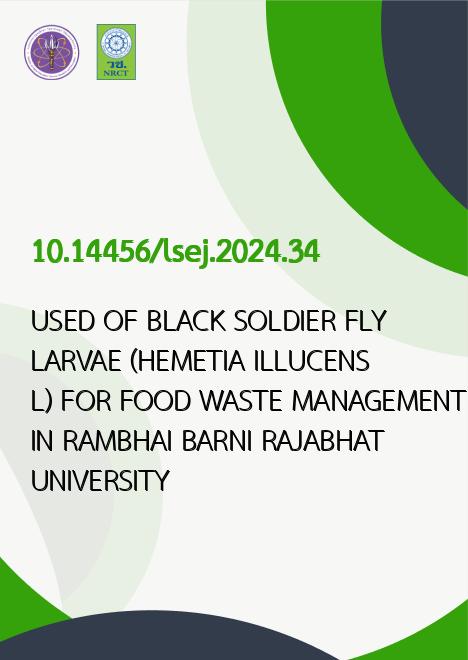
|
USED OF BLACK SOLDIER FLY LARVAE (HEMETIA ILLUCENS L.) FOR FOOD WASTE MANAGEMENT IN RAMBHAI BARNI RAJABHAT UNIVERSITY |
|---|---|
| รหัสดีโอไอ | |
| Creator | Attakorn Khamchutra |
| Title | USED OF BLACK SOLDIER FLY LARVAE (HEMETIA ILLUCENS L.) FOR FOOD WASTE MANAGEMENT IN RAMBHAI BARNI RAJABHAT UNIVERSITY |
| Contributor | Sorasak Nakeiam, Chatmongkol Sriprasong, Na-monrug Khamchatra, A-thorn Sakulworakit |
| Publisher | Pibulsongkram Rajabhat University |
| Publication Year | 2567 |
| Journal Title | Life Sciences and Environment Journal |
| Journal Vol. | 25 |
| Journal No. | 2 |
| Page no. | 454-465 |
| Keyword | black soldier fly larvae (BSFL), food waste, waste reduction index (WRI) |
| URL Website | https://ph01.tci-thaijo.org/index.php/psru/index |
| Website title | Life Sciences and Environment Journal |
| ISSN | 2773-9201 |
| Abstract | This research investigated the use of black soldier fly larvae (BSFL) for decomposing cafeteria food waste. The first part of the study investigates the growth of BSFL fed 1,000 grams per tray of food waste with 50, 100, 200, and 400 larvae over a 20-day period. The second part compares the growth of BSFL fed different food composi-tions using 10 larvae per box, 300 grams of food, over a 10-day period. It was found that using 400 larvae per tray with a feeding rate of 125 mg/larvae/day (wet basis) was most effective in reducing substrates volume. However, these larvae had lower body weight, the waste reduction index (WRI) was 1.73±0.21, has not shown a signifi-cant difference. Subsequently, the larvae fed with cooked rice, blanched vegetables, and a mixed formula had a significantly higher growth rate compared to minced pork and a control formula. And the blanched vegetable and mixed formula diets result-ed in a significantly higher WRI 7.75±0.13 and 7.84±0.08 respectively. These findings suggest that BSFL larvae are a promising method for food waste management. |